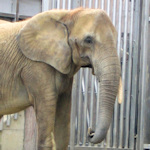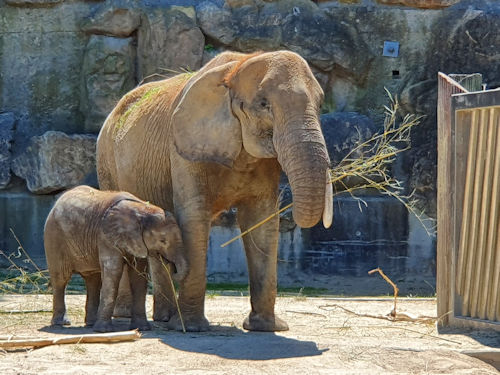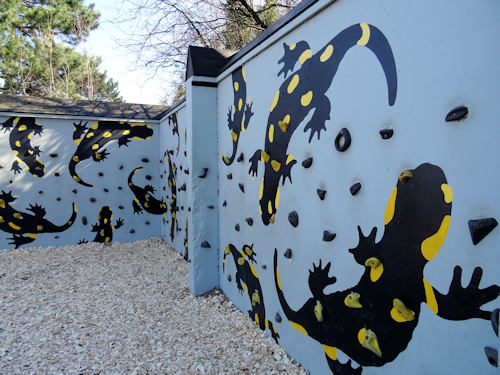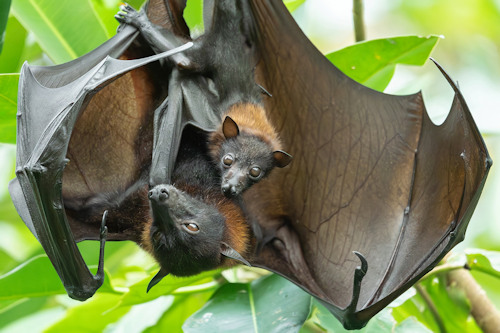
A fine treat for young and old. This international award-winning zoo lives in the extensive parkland around Vienna’s Schönbrunn Palace. Here’s what you need to know…
- Book Vienna zoo tickets* online
- See also:
Quick overview

(The marvelous meerkats)
Tiergarten Schönbrunn, to give it its proper name, is the world’s oldest working public zoo and dates back to the mid-18th century.
An extensive renovation and renewal program has turned the zoo into one of the world’s more renowned institutions: an award-winning modern institution that combines entertainment with conservation and education. Over two million people typically visit each year.
For ticket advice, directions, and suggestions on how to get the most out of your visit, see these visitor & ticket tips.
Incidentally, the zoo is one of the few tourist attractions where you get to meet a lot of locals. Parents of young kids, in particular, often take out an annual pass and visit regularly (we did).
The animals

(The zoo has a large elephant enclosure)
You’ll be relieved to hear the zoo has one or two animals in it. All your usual favourites, as well as the bright gemstone in the zoological crown: the Giant Panda.
See the animal highlights article for an overview of the best enclosures and beasties to see.
If you like animals, consider adding a visit to the Haus des Meeres: a huge aquarium and vivarium located in an old WWII flak tower.
What to do with kids

(The fire salamander climbing wall)
It’s a zoo. So, pretty much everything within suits kids. You find all the classics inside: elephants, giraffes, lions, etc.
For a few extra ideas on how best to keep the children entertained, fed, watered, scared or tired (delete as appropriate), see these zoo tips for parents.
Zoo history

(The zoo’s effective founder, dressed for breakfast)
Back in 1752, the city had fewer smartphones and not a lot of Netflix. But it already had a zoo in Schönbrunn, for which we can thank Emperor Franz I Stephan.
To learn a little more about Vienna zoo’s origins and its current standing in the zoological world, take a look at the history of Tiergarten Schönbrunn.
Recent zoo news

(“Come to Vienna, they said. It’ll be fun, they said.” A Northern Rockhopper chick is checked for progress; press photo © Daniel Zupanc)
- April 2024: the zoo has a history of success with its breeding programme for the endangered Northern Rockhopper penguin (the ones with the punk hairstyle). The fresh appearance of chicks means you can see how the parents raise their offspring in the Polarium complex
- April 2024: the average age of the herd of Burchell’s zebra just lowered thanks to the birth of two foals. They actually appeared in late March but are only now out and about in the open-air
- February 2024: the (off)spring season starts with four baby Vosseler’s blade-horned chameleons, an endangered species found only in a small area of mountains in Tanzania. Given habitat loss, reserve populations in captivity remain critical for the lizard’s long-term survival
- November 2023: a premiere as the year nears its end. The zoo has become the first in the world to breed a Jacarerana (Crocodilurus amazonicus) in captivity. Not much is known about this Amazon-dwelling lizard, so the breeding success marks a step forward in our understanding of the animal’s biology

(A young two-toed sloth; press photo © Daniel Zupanc)
- October 2023: the 13th sloth to be born at Schönbrunn has now emerged from the protection of its mother’s fur to reveal itself to visitors. Prophecies suggest this will be the one to lead the sloths into a new era of industrious activity and wakefulness. The prophecies are wrong
- October 2023: for the first time since the zoo started keeping King penguins in 1976, two chicks have slipped out of an egg in the same season (not the same egg). Born earlier in the summer and now in that plump, grey and fluffy stage we all know and love
- August 2023: the spectacled bears are back in their refurbished and reopened 1400m2 enclosure. This time, though, they have to share it with the nasua coatis, which hopefully won’t lead to too many arguments about who’s responsible for putting he bins out
- August 2023: three bats have managed the trick of being born upwards. See the new additions to the population of large flying foxes on the upper floor of the rainforest house

(A flying fox and young; press photo © Daniel Zupanc)
- July 2023: and not to be outdone by the land creatures, the sea lions have been busy and a female pup now graces the waters of Schönbrunn
- July 2023: you wait 20 years for the birth of an orang utan and then two come along at once. After a similar success in 2022, the zoo’s ape group has now added a baby female to the roster
- June 2023: the maternity ward at the black-tailed prairie dog enclosure has been in overdrive with six pups born. They’re now old enough to leave the safety of the burrow and
ruin their parents’ livesexplore their surroundings
Address: Maxingstraße 13, 1130 Vienna | Website